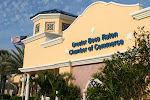Written by: Shelby Via, Director of Animal Care, SPCA Wildlife Care Center
As the human population in South Florida expands and encroaches upon an already diminishing natural and unique ecosystem, wildlife becomes exceedingly displaced as their habitat is destroyed, thus making the education of co-existence between humans and wildlife crucial.
Between the months of March and October, the primary reason wildlife chooses to shelter in, around, and under a home is because they need a safe place to give birth and raise their young. Although you may only see a single animal, during this time of year you should assume that it is a mother with dependant babies. Trapping, removing, and relocating often has tragic consequences for the animal and its babies and is only a temporary solution for your “nuisance wildlife problem”. With few “wild” places left to live in, another animal will simply move in to fill the niche you have just created. The new animal is often more of a “nuisance” than the previous one.
Although trapping and relocating wildlife may seem like a humane solution for the homeowner, it is not in the best interest of the animal. Wild animals do not “settle in” quickly to new surroundings, especially since the new surroundings are, more often than not, another animal’s territory. It now has to fight and compete with the resident animal for a limited food supply and nesting area. In nearly all cases, it is the newcomer that loses. Many die of infections from bite wounds, while others are killed by cars in an attempt to return to their original habitat and their young that were left behind. Meanwhile, the babies are unintentionally orphaned and left to slowly die of starvation.
In addition, trapping and relocating wildlife is illegal unless you are a licensed trapper. If you choose to hire a licensed trapper, make sure that it is a humane trapper, one that doesn’t euthanize unnecessarily. Also, understand that the financial cost of the trapper falls on you, the homeowner, and that this cost can sometimes be upwards of $200 per animal. There is no free government agency that will trap and relocate for you.
We recommend that if you discover wildlife nesting in or around your home, patience is the best solution. You can be assured that once the young are big enough, the birth den will have served its purpose and the animals will move out. The nesting season is short; tolerance and patience until the family has vacated will prove to serve in the animal’s, its young and your own best interest.
Friday, May 30, 2008
Subscribe to:
Post Comments (Atom)


No comments:
Post a Comment